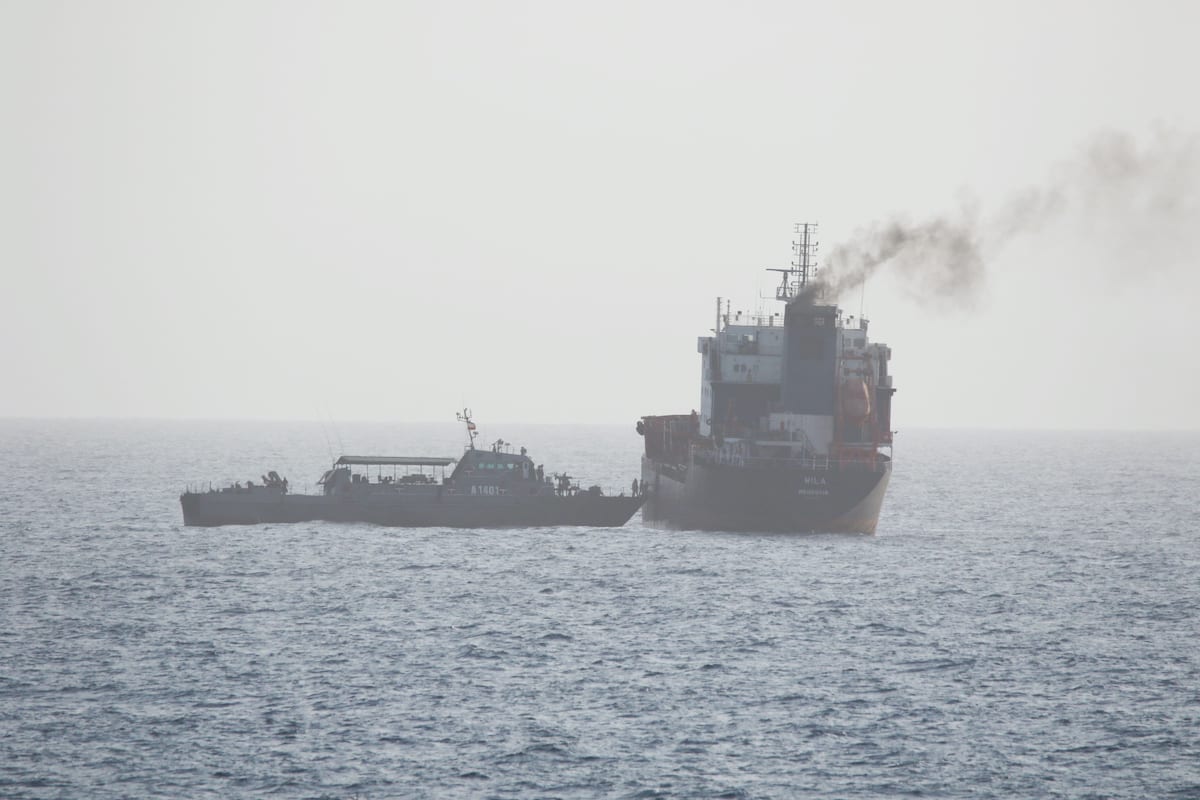search the site
Naval Coalition Celebrates One Year Protecting Shipping in Strait of Hormuz and Bab el-Mandeb Strait
Naval Coalition Celebrates One Year Protecting Shipping in Strait of Hormuz and Bab el-Mandeb Strait
November 10, 2020 by Mike Schuler

The naval coalition tasked with protecting freedom of navigation and the free flow of commerce through two of the Middle East’s most critical choke points the Strait of Hormuz and Bab el-Mandeb Strait is celebrating its first year of operations.
During this time, members of Coalition Task Force (CTF) Sentinel has provided over watch for more than 1,100 partner nation flagged merchant vessels and made almost 10,000 maritime awareness calls to reassure merchant vessels of task force presence. Over 28,000 hours have also been spent on station supporting the CTF Sentinel mission, while maritime patrol and reconnaissance aircraft flew more than 13,000 flight hours proving surveillance.
The coalition was launched in July 2019 by founding members the United Kingdom, Australia and the United States, under the International Maritime Security Construct’s (IMSC) mission to protect international commerce by safeguarding freedom of navigation from the Arabian Gulf, through the Strait of Hormuz and the Bab el Mandeb Strait, to the Southern Red Sea.
Bahrain joined soon after in August, followed by Saudi Arabia and the United Arab Emirates in August and Albania in November. CTF Sentinel’s first command center at Naval Support Activity in Bahrain was opened on November 7, 2019. Lithuania joined as a member in March following by Estonia in October in spite of constraints stemming from COVID-19 spread mitigation.
“The speed at which this coalition was formed is a testament to the internationally shared interest in safeguarding global commerce from malign actors,” said Vice Adm. Samuel Paparo, commander of U.S. Naval Forces Central Command, U.S. 5th Fleet and Combined Maritime Forces. “These nations came together to maintain vigilance over the maritime and expose those who would disrupt trade through aggression.”
According to the coalition, more than 17,000 ships per year pass through the Bab el-Mandeb Strait and more than 42,000 ships per year pass through the Strait of Hormuz, and any closure of these waterways have international consequences, impacting economies all over the globe.
“The establishment of the IMSC was a natural progression as new challenges arise in the area,” said Rear Admiral Mohamed Yousif Al-Asam, Royal Bahrain Naval Force (RBNF). “The RBNF has dedicated several naval units to enable the IMSC Commander to successfully carry out its mission. This construct has created a streamlined approach to the protection of maritime sea lanes and strategic passage ways.”
In August, CTF Sentinel moved from into a permanent headquarters building in Bahrain, specifically designed to facilitate the coalition’s mission and enhance the flow of information. It is here where the coalition’s assets are managed. These include Sentinels, i.e. large naval vessels such as frigates and destroyers, and Sentries, i.e.smaller naval vessels such as patrol craft and corvettes. Such assets have included HMS Montrose, USS John Paul Jones, USS Stout, HMAS Toowoomba, RBNS Al Muharraq, HMS Tabuk, and the Al Mubarraz.
In one incident back in August, a Sentinel ship captured the moment Iranian military forces conducted an armed boarding of the merchant ship MT Wila in international waters. The IMSC called the boarding a blatant violation of international law that undermined the free flow of commerce.
“Since the inception of the IMSC there have been no attacks on IMSC flagged vessels. Mission success!” said Royal Navy Commodore Rob Bellfield, CTF Sentinel’s current commander.

















